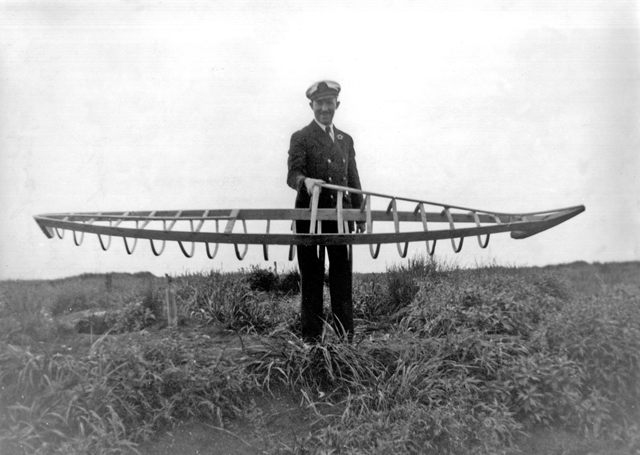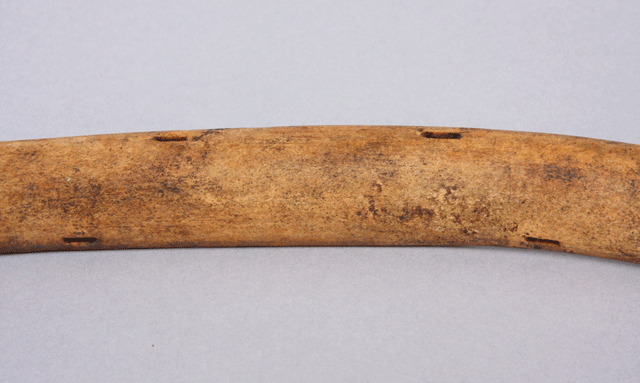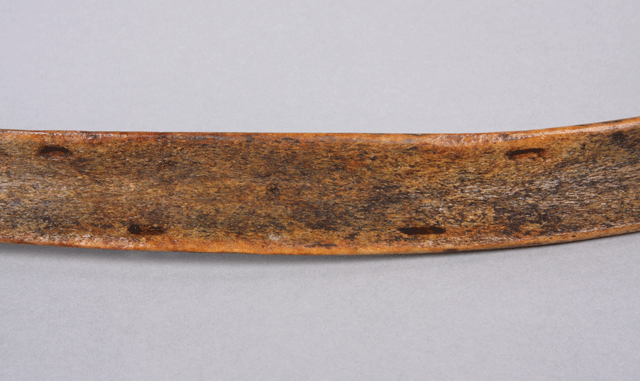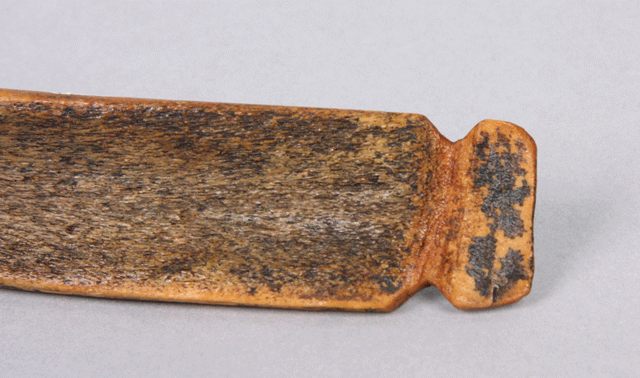
75.35.351, kayak frame part of bone
Photograph by B. Bernard

75.35.351, kayak frame part of bone
Photograph by B. Bernard
This modified bone is a good example of how a small part of an object allows archaeologists to infer the presence of the entire object. Careful study of historical Arctic kayaks allows archaeologists to identify this object as part of a kayak frame. It makes sense that an entire kayak was once present at the location where the single piece of bone was found. Which leads to another inference: people at that location once traveled on water. Thus, a very tangible object (a modified piece of bone) leads to an inference about what can no longer be seen (prehistoric travel by water).
The next photo shows a completed kayak frame, made of parts like the one
shown above. The lightness and strength of the frame is obvious. With the
addition of a walrus skin or sealskin cover, the kayak is ready for travel.

69.71.236, Dr. J. G. Manser holding a kayak frame
Kivalina, Alaska, 1933
Dr. Julien G. Manser Collection
Making inferences—inferring a kayak from a piece of bone,
for example—can contain many pitfalls, of course. One way
to guard against false conclusions is to look at the specific modifications
and wear patterns on an object, not just at its general shape. The next few
photos show some of the details of the bone artifact that make its
identification more certain.



To return to the North by Southwest learning path, click here. To return to the artifacts as archaeology learning path, click here.
All content copyright © Maxwell Museum of Anthropology, University of New Mexico. High-resolution versions of photographs may be ordered from the Maxwell Museum's photo archives. Please make note of the catalogue number. For more information please visit the photo archives web page
Page last revised on July 21, 2011. Please report problems to toh@unm.edu